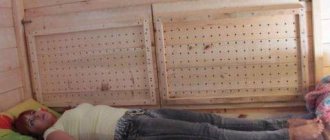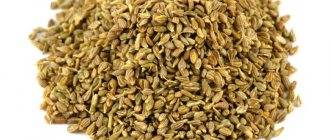Varieties
- Spicy
- Protracted
- Chronic
- Allergic
Let's take a closer look at each type.
Acute tracheobronchitis occurs in the event of acute viral infections or bacteria (streptococci, staphylococci, pneumococci). The infection spreads from the inflamed upper respiratory tract. The duration of the disease is 8-10 days. All this time the patient is contagious. The cough may last 2-3 weeks. If treatment is not started in a timely manner, the disease can become chronic or protracted.
Prolonged tracheobronchitis is considered to be a disease whose symptoms do not disappear for 1-3 months. Typically, this form is taken by a disease that has not been treated or was treated incorrectly. After properly selected therapy and following all recommendations, the disease will completely disappear within 1 month. Doctors prescribe antibacterial therapy and drugs to strengthen the immune system.
Chronic tracheobronchitis lasts more than three months. It usually occurs in combination with other chronic pathologies of ENT organs.
Very often this type is called “smoker’s bronchitis.” In total, there are 2 possible causes:
- exposure to tobacco smoke
- working in a dusty room or polluted atmosphere (for example, miners often get sick)
Allergic tracheobronchitis occurs when allergens penetrate the respiratory system. Often the patient feels well, despite the presence of symptoms such as hoarse voice, itching, and cough. A severe cough can provoke vomiting, and there is pain in the throat and behind the sternum. This form of the disease usually affects people who live in areas with high concentrations of toxic substances in the air.
What is tracheobronchitis
According to ICD-10, this disease has code J 06-J 21. It is deciphered as a complex of interconnected diseases that occur at the same time - bronchitis and tracheitis. The pathology is a chronic or acute inflammation of the epithelium of the tracheobronchial tree with its infiltration and hyperemia. The process involves the trachea, bronchi and their processes (bronchioles), and intact lung tissue. The disease has a severe course, so treatment is often carried out in a hospital setting.
Pathogens
The pathology may be bacterial or viral in nature . In the first case, the cause of the disease is pathogenic bacteria that enter the body in different ways. Among these microorganisms, tracheobronchitis is caused by:
- hemophilus influenzae;
- staphylococci;
- mycoplasma;
- streptococci;
- pneumococci;
- Moraxella;
- Klebsiella;
- pseudomonas.
Tracheid bronchitis can develop as a secondary disease against the background of not only bacterial, but also viral pathologies. This happens when the body is damaged:
- influenza virus;
- parainfluenza;
- adenovirus;
- respiratory syncytial virus;
- coronavirus;
- rhinovirus.
Routes of infection
A person suffering from viral or bacterial tracheobronchitis can infect others if they come into close contact with them. Routes of infection with this pathology:
- Aerogenic (airborne). This is the main route of infection, observed in 95-97% of cases. When coughing and talking, the patient releases drops of saliva and phlegm, which remain in the air in the form of an aerosol.
- Bronchogenic. Another common route of infection of lung tissue. The spread of microorganisms occurs during microaspiration of the contents of the oropharynx. This leads to intubation tracheobronchitis, which is observed in 35-40% of patients.
- Hematogenous. With this method of infection, viral particles from the source of inflammation enter the patient’s bloodstream and spread throughout the body.
Symptoms of the disease
Each form of the disease has its own characteristics.
Symptoms of the acute form:
- severe cough to the point of vomiting
- hoarseness
- coughing up sputum
- dry mouth
- Difficulty taking a deep breath and exhaling completely
- dysphonia (voice disorder)
- temperature increase
- hard breathing
- chest pain
- bluish lip color
It is important to start treatment of tracheobronchitis in a timely manner in order to avoid the disease becoming chronic and to prevent the most dangerous complication - pneumonia.
Symptoms of the chronic form:
- bouts of dry cough
- chest pain that gets worse when coughing
- serous-purulent discharge
Symptoms of the allergic form:
- sudden attacks of dry cough
- lack of appetite
- chest pain
- apathy
- low-grade fever
This form is easy to distinguish by the sudden onset of symptoms, as well as their equally sudden cessation. When the allergen is eliminated, all symptoms immediately disappear.
Causes
Know! Tracheobronchitis does not develop as an independent disease: it is a complication that occurs against the background of other infectious pathologies affecting the respiratory organs.
In such cases, foci of inflammation appear when pathogenic microflora are activated.
But if in some people, who may even be carriers of such pathogens, the disease may not manifest itself, then in people with weakened immune systems, tracheobronchitis will quickly manifest itself in the presence of accompanying factors :
- alcohol abuse, which reduces immunity;
- smoking;
- hypothermia of the body;
- any injuries to the mucous membranes of the trachea and bronchial tree;
- any inflammatory diseases of the respiratory tract.
The psychosomatic origin of the disease cannot be ruled out . In rare cases, but still, tracheobronchitis can develop in people who are constantly exposed to stress and suffer from psycho-emotional disorders.
It is worth noting! In such situations, a person’s immunity drops significantly, which allows harmful microflora to develop unhindered in the body.
Diagnostics
First, the doctor listens to the lungs with a stethoscope. If wheezing is heard, then an x-ray is required to rule out pneumonia. In some cases, x-rays cannot always show the real picture, then it is necessary to conduct an MRI examination.
A sputum test is required to determine bacteria. If you find out which bacteria caused the infection, you can choose the right medicine and thus make the treatment more effective.
In the case of allergic tracheobronchitis, consultation with an allergist is necessary to determine the allergen.
Effective medicines
Inhalation using:
- Ambrobene;
- Lazolvana;
- Mucolwana.
Medicines like:
- Pulmicorta;
- Flixotide.
For the purpose of antiseptic treatment of the mucous membrane of the respiratory system, the use of inhalation is recommended:
- Miramistina;
- Furacilina;
- Dioxidine (in ampoules).
Inhalation procedures for tracheitis are allowed to be carried out alternately with medication from each of the above groups. The main thing to remember is that you need to wait about a third of an hour after an inhalation session with expectorant medications for coughing to occur and sputum to come out of the bronchi.
Application of Berodual
In the list of medications used for inhalation in case of tracheitis, Berodual occupies a special place. This is a powerful drug that is available with a doctor's prescription. Characterized by a combined action.
It has bronchodilator properties. Its use in inhalation eliminates unpleasant symptoms, including spasms and suffocation. It is aimed at obtaining the effect of dilating the bronchi, thereby facilitating breathing.
Nebulizer therapy with Berodual has a rapid therapeutic effect. Within a quarter of an hour after the inhalation session, the patient feels an improvement in health. The effect lasts for ten hours.
Don't miss useful information: What to do with nebulizer inhalation when you have a runny nose?
The dosage depends on the age category of the patient:
- for children under six years of age, 10 drops of medication are taken for a session (three times a day);
- for children from six years of age to twelve years of age, a single dose for inhalation is 20 drops of medication (4 sessions per day are acceptable);
- starting from the age of twelve, a single dose is 40 drops (four times a day).
Before pouring Berodual into the nebulizer for tracheitis, the medication is diluted with sodium chloride. The ratio for preparing the solution is specified in the instructions for the medication.
Inhalation with Ambrobene
Ambrobene belongs to a number of mucolytics and expectorants. Its use in inhalation procedures helps relieve inflammation, improve motility of the bronchial tree, and expand the respiratory tract. This facilitates the process associated with ventilating the lungs.
Inhalation of a solution of this medication ensures an improvement in the patient’s well-being already on the second day of therapy. It becomes easier for him to breathe, his dry cough becomes moist, and sputum discharge becomes easier.
Application of Lazolvan
An analogue of Ambrobene, which has a pronounced mucolytic effect, is Lazolvan. Its use in inhalation helps to dilute the viscous sputum that accumulates in the trachea. This promotes its removal.
Such procedures destroy bacterial and viral microflora. This is important in cases where the incidence of tracheitis is caused by damage from pathogenic microorganisms.
Nebulizer therapy with Miramistin
The use of a solution with Miramistin, which has a strong antiseptic effect, in a nebulizer is indicated for tracheitis of infectious origin. Inhalation of this medication will relieve the inflammatory process and destroy the pathogens that cause it.
The duration of therapy in such cases is a week. Inhalation is carried out twice a day (in the morning and evening hours). The duration of the session is 5-10 minutes. The patient will notice relief of the condition already on the second day of therapy.
How to treat the disease
Treatment of the disease depends entirely on its form and symptoms. The patient must remain in bed and drink plenty of fluids. Treatment of the disease has three directions: medicinal, non-medicinal and treatment with traditional medicine methods.
Complex therapy should achieve the following goals:
- make breathing easier
- relieve inflammation
- improve sputum discharge
- improve airway drainage
In the acute form of the disease, it is necessary to determine what nature of tracheobronchitis is (viral or bacterial), and only then prescribe treatment.
In the case of a viral infection, patients are prescribed antiviral tablets, plenty of fluids and bed rest.
Bacterial tracheobronchitis is treated with antibiotic therapy. Broad-spectrum antibiotics are prescribed, taking into account the sensitivity of the isolated pathogen.
Regardless of the causative agent of the infection, symptomatic therapy must be prescribed, namely expectorants and mucoltic drugs: Erespal, Ambroxol, Lazolvan, Bromhexine or others.
When body temperature rises, antipyretics are used: Paracetamol, Ibuprofen. Smokers who have a chronic form of the disease need to quit smoking.
For the treatment of allergic tracheobronchitis, antihistamines are prescribed: Suprastin, Edem, Cetrin.
It is also necessary to take multivitamins to strengthen general immunity.
Non-drug therapy
When body temperature normalizes, physical procedures begin: massage, inhalation, physical therapy.
The most effective procedure is inhalation. They can be performed on adults, pregnant women and children. Small particles of drugs penetrate deep into the bronchi, having a beneficial effect on them. Inhalations for tracheobronchitis can be carried out both with sodium chloride and with drugs such as Decasan, Berodual.
Key points when performing a massage:
- Massage is carried out at the end of the acute form of the disease
- The patient lies on his stomach, a cushion (pillow, rolled up towel) is placed under the ankle, arms along the body
- First massage the back and then the chest
- Massage is carried out with the application of oil or cream
- Basic techniques of classical massage: stroking, squeezing, rubbing, kneading, vibration
- Duration of back massage: 10-15 minutes
- To massage the chest, the patient lies on his back, the roller is placed under the popliteal fossa
- Use the same methods of classical massage
- The duration of the chest massage is 7-10 minutes.
There are physical therapy for bronchitis. Special exercises promote rapid removal of phlegm. For example, you need to tilt your upper body down and clear your throat well.
Nuances of treatment during pregnancy
During the period of bearing a child, hormonal changes occur in the body, weight increases, and physical activity decreases. All this leads to decreased immunity. As a result, pregnant women are susceptible to viral and bacterial infections, which leads to the development of tracheobronchitis.
The disease lasts a long time, but does not have a dangerous effect on the fetus. A worrying factor is coughing, which strains the uterus and can lead to premature birth.
We recommend reading: Frontal sinusitis in adults: causes and treatment with folk remedies
X-ray radiation is harmful to the fetus, therefore, in pregnant women, tracheobronchitis is diagnosed based on complaints, examination of sputum and blood.
Self-medication during pregnancy threatens severe complications both in the progression of the disease and in the development of the fetus. Taking medications is very undesirable during such a period. Therapy should only be prescribed by a doctor after consultation with a gynecologist and carefully weighing all the risks.
Mucolytic, antipyretic and antitussive drugs are usually prescribed. Antibiotics are prescribed only in particularly severe cases. Inhalation procedures and breathing exercises, as well as the use of external remedies – rubbing and compresses – will be useful and safe.
Traditional medicine recipes
It is possible to treat tracheobronchitis using traditional medicine methods, but only if they are carried out in tandem with drug treatment.
Various decoctions and infusions are widely used. They can be taken orally or used for gargling or inhalation.
- Honey and aloe juice are combined 1:1 and taken to remove phlegm from the bronchi
- Ginger tea is a powerful antimicrobial agent
- Badger or goose fat is used to lubricate the breasts of both adults and children.
- Infusions of mint, plantain and elderberry flowers are taken 3 times a day
- Linden decoction is an effective expectorant
- Gargling with herbs or soda is an almost necessary condition in the treatment of tracheobronchitis
It is possible to cure tracheobronchitis quickly and without complications if you take medications, perform inhalations using a nebulizer, do massage, engage in physical therapy, and also use home medicine methods.
Solutions for inhalation
Inhalation solutions improve mucus discharge and make breathing easier. Applicable:
- Soda solution - stir two teaspoons of salt in a glass of boiling water and inhale the vapors with your mouth. Breaths must be deep
- Alkaline - 5 ml of mineral water is heated to 35 degrees and inhaled
Inhalation with saline solution
Saline solution is used as an independent component for inhalation. It warms the trachea, helps with the discharge of sputum and the removal of mucous accumulations. It is used to dilute medications. This is a neutral, non-toxic product, approved for pregnant women and young children.
Herbal
Medicinal herbs reduce swelling of the mucous membrane and eliminate the inflammatory process. Most often used:
- Chamomile
- Coltsfoot
- Thyme
- St. John's wort
- Melissa
Do not cook the herb for a long time, 10 minutes is enough.











